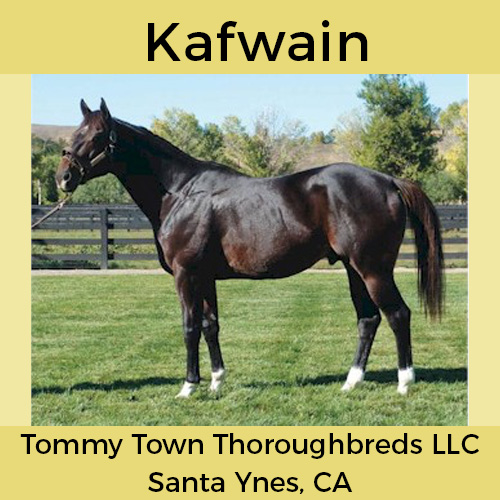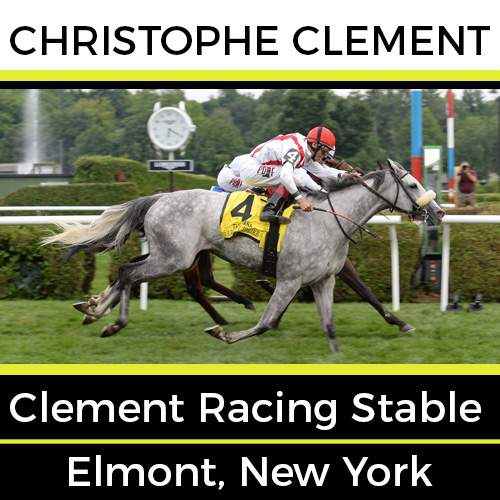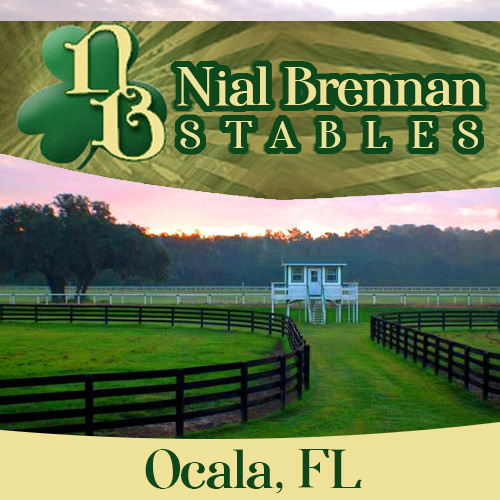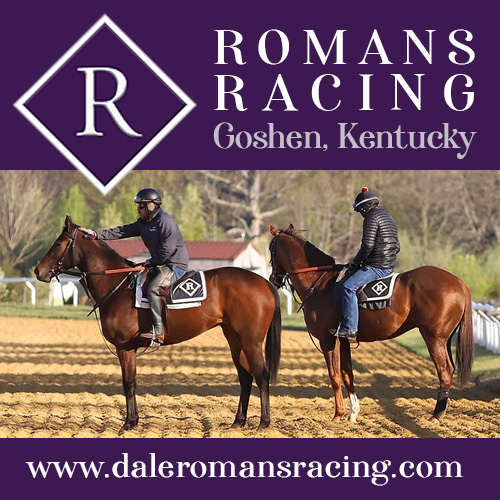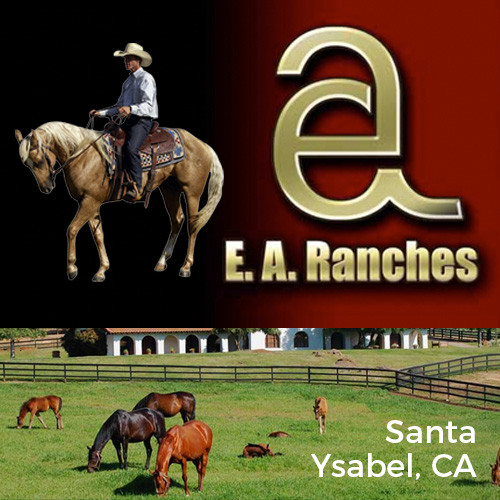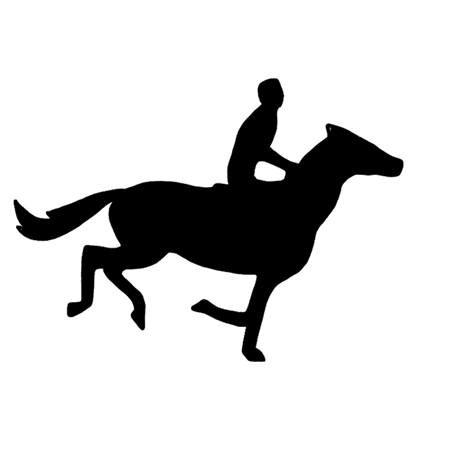The Interviews: Bloodstock Agent and ex-Trainer Mary Knight
After training horses early on in her career with Bobby Frankel and later her husband Chay, Mary Knight has become one of California's most successful and reputable Sales Consigners and Bloodstock Agents. Mary talked to Thoroughbred People about her life in racing and her views on the current state of the sport.
TBP: Mary were you interested in horses growing up? How did you get into the horse business?
MK: I was a horse crazy girl and while I was going to the College of San Mateo south of San Francisco there was a flyer in the students union saying they needed hot walkers at Bay Meadows, so I started walking hots for the quarter horse people. I really liked it, so when school finished in San Mateo I went down to Los Alamitos with the quarter horses. I was getting $50 a week walking hots.
I applied and got into Cal Poly and when I wasn't in school I was working with the horses at Los Alamitos. From then on I just knew I wanted to be a racehorse trainer.
TBP: So how did you step onto the path towards training?
MK: Well I really wanted to learn to start galloping horses, but it was very hard to go from walking hots and grooming to galloping. It was considered a privilege to go from the stall to the back of a horse. Even Bill Shoemaker - when he started out he worked like a dog at Suzie Q Ranch so he could get the chance to get on a horse. You had to start from the ground up. Some people coming into the industry these days don't have that grounding and background. I took the trainers test and I had taken Biology at Cal Poly, so I knew about anatomy and physiology and that helped me with the test. I did real well in it and I got a lot of publicity as there weren't too many women around the racetrack at the time. "Womens Lib" was big then, I think the publicity came from the fact that racing wanted to show that it was embracing women. There was a very flattering article in the LA times about me!
TBP: Then you started working as Assistant Trainer to Bobby Frankel - how did you get that job?
MK: Bobby and my husband Chay owned a horse together, so we knew each other. I had Bobby's horses at Hollywood when he was at Santa Anita, and when he was at Hollywood I was at Santa Anita, I really didn't see that much of him, he just left me alone and let me do the job. The horses would come from the farm to me, I would get them initially ready and then send them on to Bobby. We did really well with first time starters and horses coming back from a break. Then I married Chay in 1975 and became his assistant trainer.
TBP: What nice horses were you involved with?
MK: Chay trained a good horse called Raise a Man who was favorite for the Kentucky Derby before he got hurt. He later stood as a stallion at Gainesway farm in Kentucky. He won the San Felipe, the San Vincente and the Malibu. We had another good horse called Splendid Spruce, he won the Santa Anita Derby and ran seventh in the Kentucky Derby. Then there was Rancho Lejos who we claimed for $10,000, he too ran in the Kentucky Derby and became a multiple stakes winner for us.
TBP: How did you get into the consignment business?
MK: A client of my husband Chay asked me if I would sell his horses at the two year olds in training sale at Hollywood Park, he had around fourteen head. He said he would pay all the bills and give me 5%. They were pretty nice horses, we got them looking fantastic and they sold like hot cakes. Wayne Lukas and Henry Moreno said "Mary you're missing the boat - you gotta do more of this". My training background gave me an advantage over some of the other agents and suddenly I was off like a shot, all the big guys were giving me horses to sell - Wayne Lukas, Charlie Whittingham, Ron McAnally - it was a successful business right off the bat. I did the yearling sales, the twoyear old sales and the horses in training sales, which were much stronger in those days, some nice horses were sold there to people from all over the world. I'd have 50 to 60 horses at every horses in training sale back in the day.
TBP: What would you say are the biggest differences in training horses between now and back then?
MK: In those days people were more inclined to give a horse time. These days trainers don't want to let go of horses, and owners don't want to take horses out of training and stop running. It costs so much money to get a horse to the races in the first place, people are very reluctant to turn them out and start that process over again - it's a lot more expensive than it used to be. And I really think that constant confinement is a problem, the confinement factor is a huge factor, once a horse gets into training at the racetrack there's no way he can even lay down and roll. All horses want to do that from time to time, but there are no turn out paddocks or places for them to do that at the racetrack.
TBP: Unlike other countries where horses really stretch their legs warming up and gallop to the start without a pony, horses here are ponied to the start and seem to barely get out of a jog for a few minutes before they are loaded into the gate and are expected to run flat out.
MK: Well horses here haven't always been ponied to the start like they are now. When I started it was like it is in other countries, a horse only got a pony if he really needed a pony and one was requested. Now that exception is the rule - every horse has a pony. Not being warmed up enough is a contributing factor to injuries - people just want to focus on medication, but that is the least of it - believe me!
TBP: The statistics show that the average number of starts per horse has dropped significantly over the years. What factors do you attribute this to?
MK: Well it goes back to the fact that horses aren't given enough time off for rest and recovery, and also horses are more fragile now because from an early age they spend too much time in confinement. They do have weanlings and yearlings run free after they are born of course, but as soon as they start being prepped for the sales - and they are not fully developed at that point - that's when they start to be compromised.
TBP: Where do you stand on the Lasix debate?
MK: Trainers initially only used it on bad bleeders, the vet had to certify that a horse had bled visibly through the nostril for it to be given Lasix, but then it got to be that virtually every horse was on it because people did feel that it enhanced performance. Some horses are actually effected adversely and don't run at all well on it, but overall I think Lasix will stay and I think we need it now. I used to buy a lot of very nice horses from New Zealand and Australia that came here specifically because they could run on Lasix. As for the idea that it masks other drugs, I would say that that is patently false, with the quality of drug testing equipment they have now there is no way that Lasix could mask anything.
TBP: Synthetic tracks?
MK: Well when they made the mandate I thought it was ridiculous, because no one knew over time how it would work. Interestingly enough the year the mandate was made I went to work up in Washington at Pegasus Thoroughbred Training Centre where they had a Polytrack. I worked there for a year and a half and we had issues with injuries such as suspensory injuries, which were attributable to the inability of the track to yield at all. The problem was that the track didn't allow a horse's foot to slide, the foot would just hit and stick. We did figure out how to shoe for it though and the Washington climate was compatible with it. I actually had 3 grade one winners come off of there the year and a half I worked there.
 Another issue is that one of the things the synthetics were sold on was that they were low maintenance. But then people running horses in races later in the day felt that they would have been at a disadvantage if the track wasn't harrowed. At Del Mar for example you could see the tractors going over it in the heat and see the wax from the surface coming off on the tires. The environmentalists also wouldn't allow some of the fiber types that went into the original mixture either, so the surface was already compromised and was not what the mixture was supposed to be. People liked it in the morning but not in the afternoon, when it got hot and the wax became more liquid. The integrity of the mixture broke down.
Another issue is that one of the things the synthetics were sold on was that they were low maintenance. But then people running horses in races later in the day felt that they would have been at a disadvantage if the track wasn't harrowed. At Del Mar for example you could see the tractors going over it in the heat and see the wax from the surface coming off on the tires. The environmentalists also wouldn't allow some of the fiber types that went into the original mixture either, so the surface was already compromised and was not what the mixture was supposed to be. People liked it in the morning but not in the afternoon, when it got hot and the wax became more liquid. The integrity of the mixture broke down.
Another problem was that everyone put in a different type of synthetic track, that was a mistake too as we then had all different types of synthetics of course. I feel that it has been an experiment that has failed. I think a well maintained dirt track is just fine, and we have some great track men around.
TBP: What good things are happening in California racing?
MK: I think Los Alamitos is going to be a bright spot and is going to help us. The location is great, the grandstand is much more in keeping with the number of people that come to the races, and they have made a very substantial investment and commitment to the racing industry when so many of these places and track owners are trying to get out of racing.
TBP: Do you think Los Alamitos will get more racing dates?
MK: Well probably, but the problem is that we already have too many racing dates, we're overly saturated with too many dates. If other sports were going 24/7 like racing does people wouldn't care about them like they do.
TBP: Do you have any thoughts about how to interest new fans in the sport?
MK: Something I have thought about and I don't know whether it would work or not, is that it would be great if every racetrack could have a small museum of national or/and local horse racing history. Local schools are always looking for field trips etc. so to set up a space where we could show pictures and footage and movies of the old days and the history of racing at that track and across the country, it could only help. Also a lot of people are completely in the dark when they go to the track for the first time and there are plenty of racing people, exercise riders for instance, who would be happy to work part time in the afternoons to help people out and educate newcomers to the game. These days people are so far removed from the use of the horse and agrarian life.
If we could educate people to the breeding side of things and print pedigrees in racing programs, perhaps we could highlight and point out which horses are in that day by this sire or out of this dam etc.. I think it would pique curiosity and be another angle of interest for people that they are currently completely unaware of. The more people know and understand about horse racing the more it will appeal to them.
TBP: Tell us about the Whole Body Vibration system and how it works. http://youtu.be/lHEvzltefcI
MK: It stimulates the circulation and it mitigates much of the compromisefrom the confinement situation. Ideally every horse in the barn would go on it for around ten minutes a day. There is a small ramp for the horse to walk on and off, trainers usually position them at the end of their barn. Most of the major rehab centers around the company have them, Todd Pletcher has one, Doug O'Neill has one and loves it. It helps horses warm up too, if you put an old claiming horse on it for a few minutes before they go out onto the track the rider can sure tell a difference in the way they go. Horses take to it really well and they really like it, they come off bucking and playing and look forward to going on it again.
 I had a prototype made and I had it up at Winner's Circle ranch, I'm on the board of directors of the Thoroughbred Rehab foundation, and we had a horse we had taken off the track called Super Strut who had won quite a lot of money but who had real bad feet. We put him on the machine and after 30 days his foot had grown 1.34 centimeters, which in the dead of winter is a big deal. Patrick Sheehy had Kinsale King, who had real bad quarter cracks, on one, it really helped him and he went on to win those big sprint stakes races. Everyone that uses it likes it, it's a good piece of equipment and you can't get into trouble with it, it's virtually indestructable.
I had a prototype made and I had it up at Winner's Circle ranch, I'm on the board of directors of the Thoroughbred Rehab foundation, and we had a horse we had taken off the track called Super Strut who had won quite a lot of money but who had real bad feet. We put him on the machine and after 30 days his foot had grown 1.34 centimeters, which in the dead of winter is a big deal. Patrick Sheehy had Kinsale King, who had real bad quarter cracks, on one, it really helped him and he went on to win those big sprint stakes races. Everyone that uses it likes it, it's a good piece of equipment and you can't get into trouble with it, it's virtually indestructable.
TBP: What are your plans for the future, you've had a great career in racing, are you planning on retiring or will you stay in the game?
MK: Well I intend to be Nanny to my future grandkids, but they will be learning a lot about horses and racing as I have no intention to leave the business completely and I will keep doing what I am doing indefinitely!
------------------------------------------------------------------------------------
ThoroughbredPeople.com

